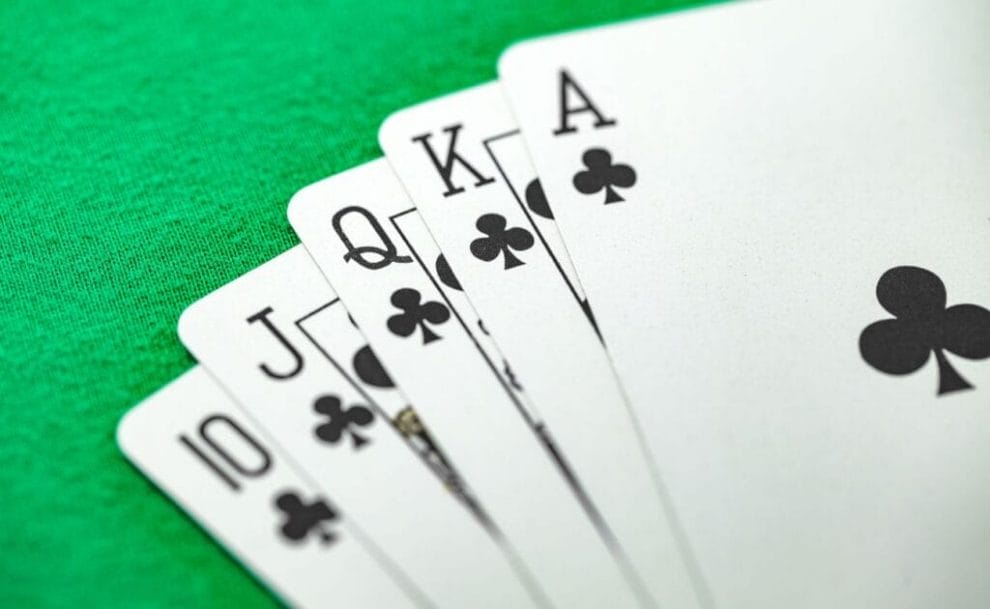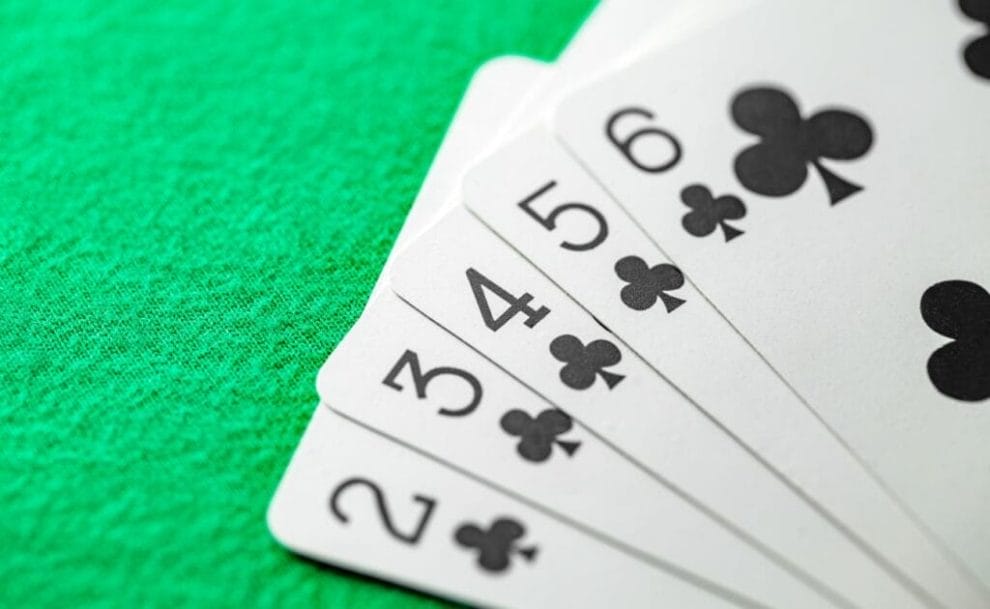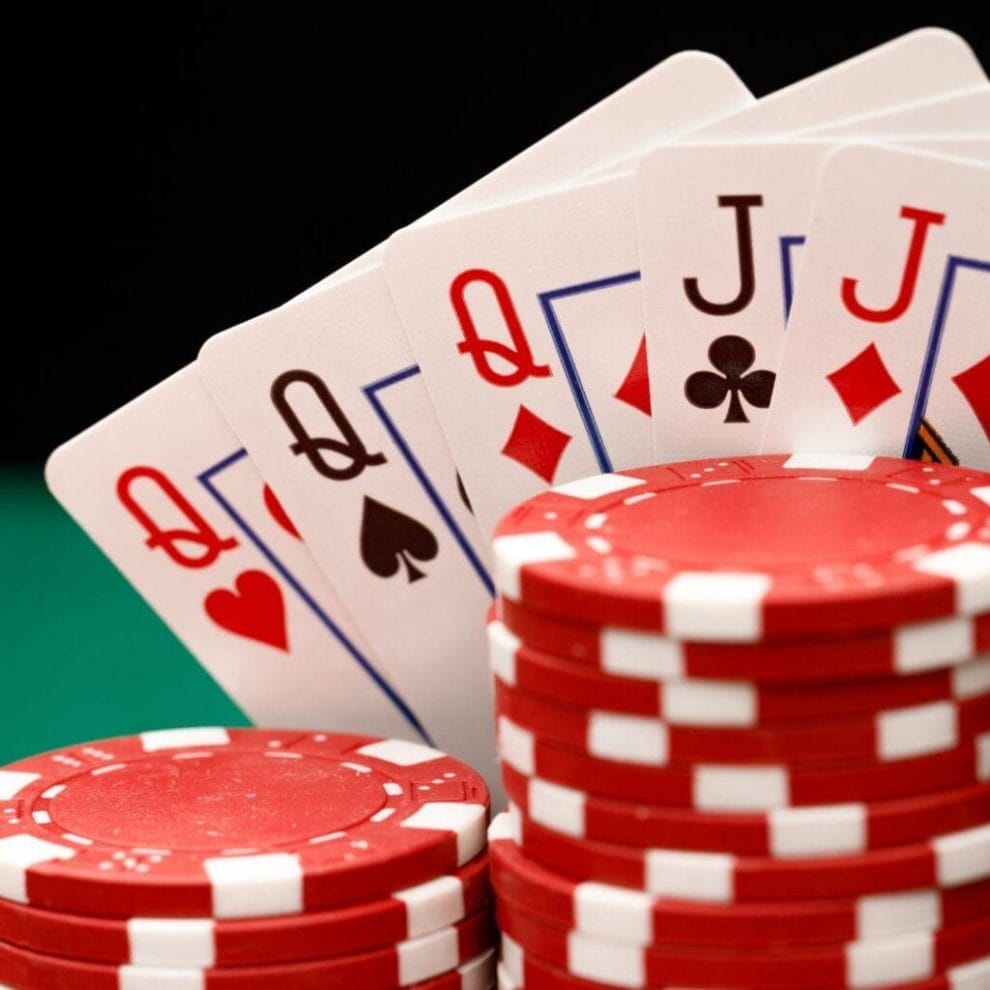
Are you learning how to play poker? Whether playing live or online poker, you’ll probably have already gathered just how important suits are to this popular game. They come into play when evaluating certain hands, like flushes and straights, and could mean the difference between a sizable win and a devastating loss.
Have you ever wondered about the symbolism of playing cards? Or maybe about the significance of the color of the suits? Read on for a crash course on the playing card symbols’ meaning and how these suits can impact your game.
The Different Suits in a Standard Deck of Playing Cards

There are four suits in a standard deck: hearts, diamonds, spades, and clubs. The heart and diamond suits are usually red, and the spades and clubs are black. Each suit comprises 13 cards, including numbered cards (2—10), face cards (jack, queen, king), and an ace. In total, a standard deck has 52 cards.
Do the Suits Have Any Hierarchy or Ranking in Poker?
Usually, no. All the suits have an equal ranking poker. The deciding factor revolves around the combination of cards you have in your hand. But there are situations where the suits do matter.
For example, in some poker variants, if you have the exact same hand as one of your opponents (including the same ranks of cards), then it’ll be up to the suit to break the tie. Certain games may designate specific suits as higher or lower, and the player with the highest suit wins. In seven-card stud, for instance, spades is considered the highest-ranking suit and clubs the lowest.
The Meanings Behind the Playing Cards’ Symbols
While there’s no universal agreement on the meanings of playing card symbols, various cultural and folkloric associations have developed over time. Here’s a quick overview:
- Hearts: Unsurprisingly, the most common association for the heart suit is love and emotions.
- Diamonds: The diamond suit usually represents wealth and prosperity.
- Clubs: Many players associate the club suit with knowledge and growth.
- Spades: The spade suit is thought to represent power, courage, and transformation.
The Significance of Colors
There isn’t any significance when it comes to the color of the suits in a deck of playing cards — it’s simply a design choice that gives the cards a clear visual contrast. Plus, using consistent colors for each suit helps maintain a standard and recognizable design across various decks of playing cards, regardless of the specific card manufacturer.
Are There Any Superstitions Or Beliefs Associated With Specific Suits In Poker?
There are many poker myths and superstitions associated with different aspects of casino table games — and poker and its playing cards’ suits are no exception. You’ll meet many gamblers with their own personal superstitions, but there are commonly held ones, too. For example, spades are often viewed as an unlucky suit, as they’re associated with death in some cultures, while hearts are usually viewed in a positive light and often a “favorite” suit. Then you have gamblers who believe diamonds bring the promise of better winning odds. In general, clubs are seen as a neutral suit.
Remember, superstitions are subjective, and they don’t have any bearing on the outcome of any poker game. You should approach these beliefs with a sense of humor and an understanding that poker outcomes are ultimately determined by the cards, your skill and concentration in playing poker, and the decisions that you and your opponents make during play.
How Does Knowing the Suits Help To Make Decisions During Poker?

You can’t make informed decisions about whether to call, raise, or fold when playing online poker tournaments or cash games unless you have a good understanding of the cards’ suits and rankings. Here are a few examples of how suits can impact the game:
Flushes
Understanding the suits is essential when you’re trying to create a flush, which is a poker hand comprising five cards of the same suit. Recognizing the possibility of a flush on the board or in your own hand can influence betting decisions and potential strategies.
Draws
If the community cards reveal cards of the same suit, players may be drawing to a flush. Recognizing this can impact decisions related to betting, raising, or folding. It can also help in assessing the strength of your opponents’ hands.
Potential Straights
Suits can also be relevant when considering potential straights. If there are three or four consecutive cards of the same suit on the board, players might be drawing to a straight flush. This knowledge can affect betting patterns and decisions.
Bluffing Opportunities
Observing the suits on the board and in your hand can present opportunities for strategic bluffing. For example, representing a flush draw may be a part of a bluffing strategy to mislead opponents about the strength of your hand.
Reading Opponents
Observing how your opponents react to the suits on the board can provide insights into their possible holdings. Players may react differently to coordinated or flush-heavy boards, which will influence your next steps.
Play Casino Games Online at Borgata Online
Borgata Online is your digital casino of choice when learning how to play poker. Choose from an ever-growing menu of games, including tournaments, cash games, video poker, and live dealer casino games. You also have a massive selection of online slots and various other online casino games, from blackjack to baccarat and everything in between. Register when you’re ready to explore.
